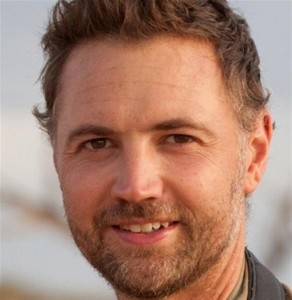There’s an inner frog within all of us, we just need to rekindle that
The Amphibian Survival Alliance’s Dr Robin Moore aims to get people concerned with conserving less charismatic creatures. Robin explores how we can scale up conservation efforts for the most threatened vertebrate group, the amphibians. In particular he questions how we might engage a public that is disempowered by prophecies of inevitable doom. We talk about several unconventional projects in amphibian conservation, including: the Search for Lost Frogs campaign; the Metamorphosis project; and the Frame of Mind campaign. What is clear is that storytelling takes engagement to a whole different level as humankind explores our connection with amphibians and the wider environment.
Talking points
Kermit makes it easier – he is an amiable character, he helps people relate to frogs
You do need the poster frogs – we’re picking the sexiest of the relatively unsexy. Â To just focus on the ecologically valuable – the small brown frogs – wouldn’t engage the public.
The future of frogs is in our hands, we’re bound by the same fate of environment
Scientists are trained to be so objective, to remove human bias or emotional attachment toward study subject. But truth is, there is always a human bias, the fact that there are 500 times more studies on mammals than amphibians is a human bias towards mammals. Scientists always approach something with unique experience and perspectives
My eyes were opened to the power of story-telling and using art first of all through the Search for Lost Frogs. Â I realised that that resonated with people not because we were trying to tell them that a third of amphibians were threatened, but because we were telling stories and I think people respond in a different way when you’re telling stories and not just delivering the dry facts.
You can fit facts around your existing attitudes. Climate Change is a perfect example, the more facts you tell them they can dig in their heels.
Walking a fine line with maintaining scientific integrity, when you engage with the media you lose to a certain extent the control of the message. The story that gets picked up may not be the story that you want to tell.
When you are trying to save the frogs, you are really trying to save the environment – you are not trying to save the frogs in isolation. And when you’re trying to save the environment, you’re essentially trying to change people’s behaviour and attitudes. So conservation, more often than not, boils down to working with people.
One of the challenges is the perception of the environment as something separate from us, something to be exploited and abused
Improving the state of the environment and the lives of the people is the same deal. You can’t improve the lives of the humans if you are destroying the environment. (In Haiti) a lot of the problems are linked to the state if the environment.
It is a false dichotomy to look at human welfare and think it is conservation versus development.
(Am I an activist?). I guess so, yeah, I don’t often use that word. (You used it to describe the model you worked with . She does consider herself to be activist?) I think so. I can from a background of reporting conservation and working with local groups, I didn’t feel that was activism so much. Whereas Gabby really does focus on the messaging and getting the message out there, whereas my work with amphibian survival alliance, is also supporting habitat protection projects – which I don’t think of as activism. Perhaps an element of what I do is activism, but not the whole suite.
You can’t not answer a 12 year old who is asking a question about her future.
Dr Moore was in Dunedin for the Science Teller Festival organised by the Centre for Science Communication at the University of Otago. We are grateful for the organisers of the Festival in their help in arranging this episode of Sustainable Lens.

